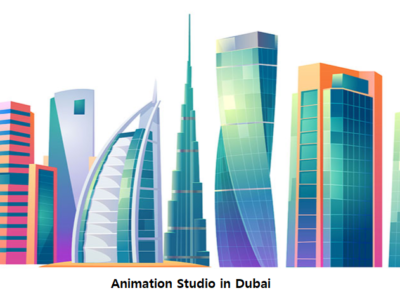
In today’s fast-paced digital world, front-end frameworks have become essential tools for web developers. These frameworks simplify the development process, boost efficiency, and ensure that web applications are responsive, user-friendly, and visually appealing. With numerous options available, choosing the right front-end framework can be challenging. In this blog, we’ll explore the top 10 front-end frameworks that every web developer should know, along with their key features, use cases, and why they stand out.
List of top front-end frameworks
1. React
React, developed by Facebook, has revolutionized front-end development since its release. As one of the most popular JavaScript frameworks, React allows developers to build dynamic and interactive user interfaces with ease. Leveraging React JS development services can further enhance your application’s performance, scalability, and user experience, making it a top choice for modern web projects.
Key Features:
- Component-Based Architecture: React’s component-based structure promotes reusability and modularity, allowing developers to break down complex UIs into smaller, manageable pieces.
- Virtual DOM: React uses a virtual DOM to optimize rendering performance. Instead of updating the entire page, it only updates the parts that have changed, making the application faster and more efficient.
- Reusable Components: Components in React can be reused across different parts of the application, reducing code duplication and improving maintainability.
Use Cases: React is ideal for building single-page applications (SPAs), real-time data applications, and any web app that requires a dynamic user interface. Companies like Facebook, Instagram, and Airbnb use React to power their front-end.
2. Angular
Angular, maintained by Google, is a comprehensive front-end framework that provides everything you need to build large-scale applications. Angular is known for its robust architecture and powerful features, making it a popular choice for enterprise-level applications.
Key Features:
- Two-Way Data Binding: Angular’s two-way data binding ensures that changes in the model automatically reflect in the view and vice versa, simplifying the development process.
- Dependency Injection: Angular’s built-in dependency injection allows for better code organization and easier testing.
- TypeScript Support: Angular is built with TypeScript, a statically typed superset of JavaScript, which provides enhanced tooling, better error handling, and improved code quality.
Use Cases: Angular is best suited for building complex, large-scale web applications, such as enterprise-level software, content management systems, and e-commerce platforms. Notable companies using Angular include Google, Microsoft, and Upwork.
3. Vue.js
Vue.js is a progressive JavaScript framework that has gained popularity due to its simplicity, flexibility, and ease of integration. Often considered a middle ground between React and Angular, Vue.js offers the best of both worlds. By working with skilled Vue.js developers, you can harness the framework’s full potential to create efficient and adaptable applications tailored to your specific needs.
Key Features:
- Simplicity: Vue.js has a gentle learning curve, making it accessible to both beginners and experienced developers.
- Flexibility: Vue.js can be used for single-page applications, as well as being integrated into existing projects to enhance specific features.
- Ease of Integration: Vue.js can be easily integrated into other projects or libraries, making it a versatile choice for various development scenarios.
Use Cases: Vue.js is ideal for building user interfaces and single-page applications. It’s also a great choice for projects that require gradual adoption, as it can be integrated into existing applications. Companies like Alibaba, Xiaomi, and GitLab use Vue.js in their web applications.
4. Svelte
Svelte is an innovative front-end framework that takes a unique approach to building web applications. Unlike traditional frameworks, Svelte shifts much of the work to compile time, resulting in leaner and faster applications.
Key Features:
- No Virtual DOM: Svelte eliminates the need for a virtual DOM, leading to faster performance and smaller bundle sizes.
- Compilation During Build: Svelte compiles components at build time, generating efficient JavaScript code that directly manipulates the DOM.
- Lean Performance: Svelte’s compiled output is smaller and more efficient, making it ideal for performance-critical applications.
Use Cases: Svelte is a great choice for developers looking to build high-performance applications with minimal overhead. It’s well-suited for building interactive web applications, dashboards, and SPAs. Companies like The New York Times and GoDaddy have adopted Svelte in their projects.
5. Ember.js
Ember.js is a powerful front-end framework known for its convention-over-configuration philosophy. Ember.js is designed to make developers productive by providing a strong set of conventions and tools for building ambitious web applications.
Key Features:
- Ember CLI: Ember’s command-line interface (CLI) offers a powerful set of tools for managing projects, automating tasks, and generating boilerplate code.
- Strong Routing System: Ember.js has a robust routing system that makes it easy to manage application states and handle navigation.
- Full-Stack Solution: Ember.js provides everything needed to build a full-stack application, from templates and components to routing and state management.
Use Cases: Ember.js is ideal for building large-scale, feature-rich applications that require a lot of routing and state management. Companies like LinkedIn, Square, and Netflix use Ember.js to power their web applications.
6. Backbone.js
Backbone.js is a lightweight JavaScript framework that provides the minimal structure needed to build web applications. It’s known for its simplicity and flexibility, making it a popular choice for developers who prefer a more hands-on approach.
Key Features:
- Simplicity: Backbone.js provides a minimalistic framework that lets developers focus on the core aspects of their applications without unnecessary complexity.
- Flexibility: Backbone.js doesn’t enforce strict conventions, allowing developers to structure their applications as they see fit.
- Minimalistic Approach: Backbone.js offers a small footprint, making it ideal for smaller projects or when performance is a concern.
Use Cases: Backbone.js is best suited for small to medium-sized projects that don’t require a full-fledged framework. It’s often used for single-page applications and projects where performance is critical. Companies like Pinterest, Trello, and Tumblr have used Backbone.js in their web applications.
7. Foundation
Foundation, developed by Zurb, is a responsive front-end framework that focuses on mobile-first design. Foundation is known for its flexibility and customizability, making it a popular choice for building responsive websites and web applications.
Key Features:
- Mobile-First Approach: Foundation emphasizes mobile-first design, ensuring that websites are optimized for mobile devices from the start.
- Customizability: Foundation offers a wide range of customization options, allowing developers to create unique designs that stand out.
- Pre-Built Components: Foundation provides a set of pre-designed components that can be easily integrated into projects, speeding up development.
Use Cases: Foundation is ideal for building responsive websites, landing pages, and web applications that need to perform well on mobile devices. Notable users of Foundation include eBay, Adobe, and Mozilla.
8. Bootstrap
Bootstrap is one of the most widely-used front-end frameworks, known for its ease of use and extensive documentation. Developed by Twitter, Bootstrap provides a responsive grid system and a wide range of pre-designed components, making it a go-to choice for many developers.
Key Features:
- Responsive Grid System: Bootstrap’s grid system allows developers to create responsive layouts that adapt to different screen sizes effortlessly.
- Pre-Designed Components: Bootstrap offers a library of pre-built components, such as buttons, forms, and navigation bars, that can be easily integrated into projects.
- Ease of Use: Bootstrap’s straightforward syntax and extensive documentation make it easy for developers of all skill levels to get started.
Use Cases: Bootstrap is perfect for building responsive websites, landing pages, and prototypes. It’s especially popular for projects with tight deadlines or limited resources. Companies like Twitter, Spotify, and Udemy use Bootstrap in their web development projects.
9. Materialize
Materialize is a front-end framework based on Google’s Material Design principles. Materialize offers a clean and modern design aesthetic, along with a set of responsive components that make it easy to create beautiful and functional websites.
Key Features:
- Material Design Principles: Materialize follows Google’s Material Design guidelines, ensuring a consistent and visually appealing user interface.
- Responsive Components: Materialize offers a wide range of responsive components, such as cards, modals, and navigation menus, that work well on all devices.
- Clean Design: Materialize’s clean and modern design makes it a great choice for projects that prioritize aesthetics.
Use Cases: Materialize is ideal for building websites and applications that require a modern and visually appealing design. It’s commonly used for portfolios, e-commerce sites, and web applications. Companies like Google and NASA use Materialize for their projects.
10. Semantic UI
Semantic UI is a front-end framework that focuses on making HTML more readable and intuitive. By using human-friendly class names and a modular design, Semantic UI aims to make the development process more enjoyable and efficient.
Key Features:
- Human-Friendly HTML: Semantic UI uses class names that are easy to understand and remember, making the codebase more readable and maintainable.
- Modular Design: Semantic UI’s modular design allows developers to build applications with reusable components, reducing duplication and improving maintainability.
- Responsive by Default: Semantic UI is responsive out of the box, ensuring that websites look great on all devices.
Use Cases: Semantic UI is well-suited for projects where code readability and maintainability are a priority. It’s often used for building websites, web applications, and prototypes. Companies like Snapchat and Accenture have used Semantic UI in their projects.
Conclusion
Choosing the right front-end framework depends on your project’s needs, the complexity of the application, and your personal or team’s expertise. React, Angular, and Vue.js are popular choices for building modern web applications, while Svelte and Ember.js offer unique approaches for specific use cases. Frameworks like Bootstrap and Foundation are great for responsive design, while Materialize and Semantic UI provide aesthetically pleasing and intuitive designs.
Ultimately, the best framework is the one that aligns with your project goals and helps you deliver a high-quality, user-friendly product. Stay updated with the latest trends, and don’t hesitate to experiment with different frameworks to find the one that works best for you.










